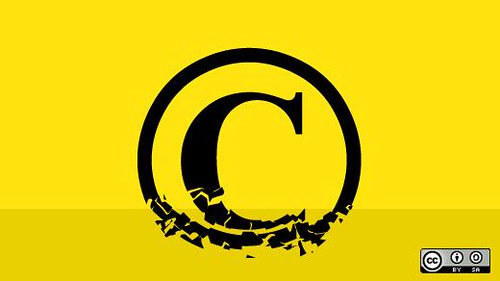History of the Internet
In the early 1990s, with the successful completion of the World Wide Web protocol, the commercialisation of the Internet began to accelerate, with various new business models and Internet services being developed and brought to market and a large number of Internet companies emerging. As a new business model, the super network platform has great social value. However, their openness and network effect can aggregate billions of users and challenge the existing network governance model (boyd,2011; Varnelis, 2008). Furthermore, the commercialisation of the Internet in recent years has also made the regulation of the Internet an important topic. As a result, E-platforms have evolved throughout the Internet’s development. This new business model has enabled the vast networks of users and resources, the formation of markets within platforms, and the efficient operation of communities, enabling transactions and interactions between independent individuals while allowing Internet giants to collect and control vast amounts of user data.
“Internet computer business” by MarcelaPalma is licensed under CC BY-NC-SA 2.0
What is Techlash?
These mega-networking platforms have become a monopoly on commercial profitability. More importantly, they have become the global information infrastructure of the Internet world, dominating people’s lives, work, entertainment, and commerce. To a large extent, they are even replacing the online society’s public services and public policies, which the state should undertake. They are participating in the social management functions of traditional governments. The top five big tech companies in terms of market capitalisation are now held by high-tech companies known as FAMGA. In the 2018 Economist, the term Techlash is stands for Technology Backlash (Wooldridge, 2013). It is used to describe the growing discontent of the public, politicians and governments with the ever-increasing power of big tech. In the following sections, this article will explain the public’s social concerns and regulatory difficulties by linking the political economy and cultural factors to analyse the specific aspects of techlash.
“question mark” by WingedWolf is licensed under CC BY-NC-ND 2.0
Why are people so concerned?
Currently, the major digital platforms are attracting public attention for reasons such as misinformation, personal privacy violations, intellectual property violations and monopoly issues on platforms.
Echo Chamber
“Shinkyusha (Sacred Stable) and Sanzaru (Three Wise Monkeys)” by FlickrDelusions is licensed under CC BY-NC-SA 2.0
The World Wide Web was initially intended for unlimited communication and sharing of content between people. Still, this quality has made it easier to post misinformation or even hate speech on social media (Flew, 2018). It has also made this type of speech spread more rapidly, exposing the social problems behind it. MIT conducted an extensive and in-depth study of the content shared on Twitter in 2018. The researchers revealed that the purveyors of fake news take advantage of the platform’s algorithmic mechanisms to create more targeted content. Based on most users’ usual search habits and behavioural data, they can generate the info that people might want to participate in and can easily believe.
The misinformation can disrupt the public’s daily life and, to a greater extent, can even affect democratic politics. It can be demonstrated in recent years with the U.S. presidential elections. For example, the riots on 6 January 2021, when supporters of former president Donald Trump violently broke into the U.S. Capitol.
Before the incident happened, Trump continued to tweet that the Democrats had manipulated the vote. In contrast, more conspiracy theories and rumours about election fraud followed up. The platforms did not manage this process. Instead, they allowed the hate speech and terrorist threats that were being spread. The major social media apps only blocked his account after the incident, which inevitably led to public criticism about these companies.
Eli Pariser introduced the concept of The Filter Bubble in 2011 in his book, and the meaning of this term is very similar to the Echo Chamber. It means that internet giants use algorithms when analysing user data to recommend content to users, i.e. content they like to see and search for based on their habits. He also suggests that because internet companies believe that users will gradually become dependent on their products because of the algorithm. Therefore, according to this way of browsing information, different voices and opinions are gradually excluded from the algorithms that recommend information to people. As a result, the public might end up accepting or passively browsing the same popular content.
Crisis over copyrights
“Copyright license choice” by opensourceway is licensed under CC BY-SA 2.0
The public is also concerned about the violation of intellectual property rights and privacy on digital platforms. People post contents about themselves on the Internet every day, such as personal statuses, photos and videos. However, most platforms are unable to control copyright infringement during the distribution of information effectively, and the posts can inadvertently be stolen and viewed for profit. It could even be financially damaging to the original creator and devalue their works. For example, in Facebook’s Transparency Report for the first half of 2021, 330,000 IP-related content reports were available, yet laws do not effectively protect them.
Does personal privacy really exist on the Internet?
Users posts online contents eveyday, and big-tech companies use the data that users share on SNS to collect their email addresses and other contact details and infer their spending tendencies, marital status, and work status by their algorithms.
The European Commission imposed a record €2.4 billion fine on Google, the world’s most popular search engine company, in June 2017 for placing its own company’s products at the bottom of the search bar when recommending products that people wanted to buy. This example brings the public to the topic of the gradual alienation of people by the information they create and is another way in which capitalism exploits people’s labour.
“Money House” by 401(K) 2013 is licensed under CC BY-SA 2.0
On the other hand, the Prism scandal in 2013, in which the U.S. National Security Agency conducted deep surveillance of instant messages and existing data, has led to widespread reflection on this issue worldwide. The limits of tolerance for using technology as a means of public power to invade public privacy in the name of national security are still being explored.
“Privacy – Privacy Online” by perspec_photo88 is licensed under CC BY-SA 2.0
The Internet is currently growing in stature and governments and organisations in various countries, and even individual users, are beginning to raise their attention to regulating the Internet. The governance of the powerful digital platforms is currently a process in which multiple interested parties play against each other, each participating in the governance of the Internet environment in order to guard their interests.
Self-regulation
“motion gears -team force” by ralphbijker is licensed under CC BY 2.0
The media’s social responsibility theory was born in the United States in the 1940s, and in 1997 the American Freedom of the press Commission published its report A Free and Responsible Press, which introduced the theory of social responsibility. However, when the media fail to fulfil this obligation, they are subject to monitoring and control from the government. As a result, it would be easier for technology companies to regulate their products as they are more familiar with their business. Still, at the same time, this isn’t easy to achieve as the primary purpose of the major digital platforms is to profit from their operations, resulting in big tech companies not being able to regulate themselves independently.
Regulation by civil society organisations
Civil society organisations also have an essential role to play on the Internet. For example, when it is about the private rights of companies, the involvement of civil society organisations can lead to a more transparent regulatory mechanism for the public. In addition, the CSO can bring together the diverse forces of society and play a unique role as a more credible and independent non-profit social third-party institution. On the other hand, the platform should actively cooperate, because the public and organisations can only supervise but cannot change the status quo.
Regulation by government
Just as countries have borders, the world of the internet is regulated by different countries. While government regulation of the internet allows for faster implementation and the ability to enforce laws into governance guidelines effectively, government regulation is too slow to grasp new technologies and can lead to the eavesdropping of citizens’ information as in the case of Prism. Moreover, as mentioned at the beginning of this paragraph, the legal systems of each country are not consistent and cannot be enforced across borders.
Conclusion
Finally, there are multiple conflicting interests in the governance of social media platforms that make regulation difficult and uncoordinated. To make the Internet a safer environment, it is crucial to uphold the World Wide Web’s original intent and to clarify each party’s responsibilities for joint governance.
Refrerence List
Abbate, J. (2017). What and where is the Internet? (Re)defining Internet histories.
InternetHistories(2017), 1(1-2), 8–14.
https://doi.org/10.1080/24701475.2017.1305836
Bruns, A. (2019). Filter bubble. Internet Policy Review, 8(4).
https://doi.org/10.14763/2019.4.1426
Burgess, J., Marwick, A. E., & Poell, T. (Eds.). (2017). The sage handbook of social media. ProQuest Ebook Central
https://ebookcentral-proquest-com.ezproxy.library.sydney.edu.au
Flew, T., (2018). Platforms on Trial. Intermedia, 46(2), 24-29.
https://eprints.qut.edu.au/120461/
Gillespie, T. (2017). Governance by and through Platforms. In J. Burgess, A. Marwick & T. Poell (Eds.), The SAGE Handbook of Social Media. SAGE Publications.
https://ebookcentral-proquest-com.ezproxy.library.sydney.edu.au
Gorwa, R. (2019). What is platform governance? Information, Communication & Society, 22(6), 854–871.
https://doi.org/10.1080/1369118X.2019.1573914
Haim, M., Graefe, A., & Brosius, H.-B. (2018). Burst of the Filter Bubble?: Effects of personalization on the diversity of Google News. Digital Journalism, 6(3), 330–343.
https://doi.org/10.1080/21670811.2017.1338145
https://www.flickr.com/photos/111692634@N04/18528198069
https://www.flickr.com/photos/68751915@N05/6809000715
https://www.flickr.com/photos/47691521@N07/4371001458
https://www.flickr.com/photos/27195496@N00/31765740037
https://www.flickr.com/photos/31167076@N07/5471047557
https://www.flickr.com/photos/53114928@N02/12239000755
<a rel=”license” href=”http://creativecommons.org/licenses/by/4.0/”><img alt=”Creative Commons License” style=”border-width:0″ src=”https://i.creativecommons.org/l/by/4.0/88×31.png” /></a><br />This work is licensed under a <a rel=”license” href=”http://creativecommons.org/licenses/by/4.0/”>Creative Commons Attribution 4.0 International License</a>.







